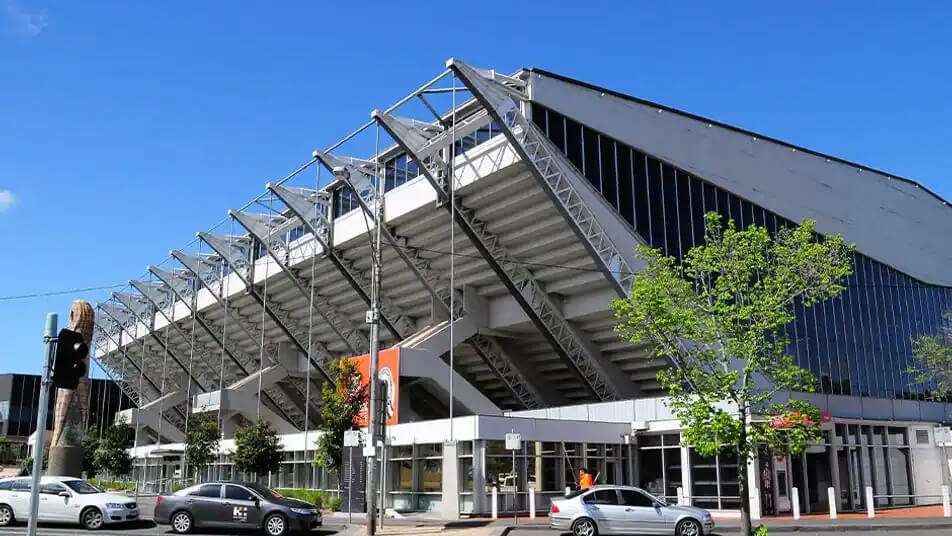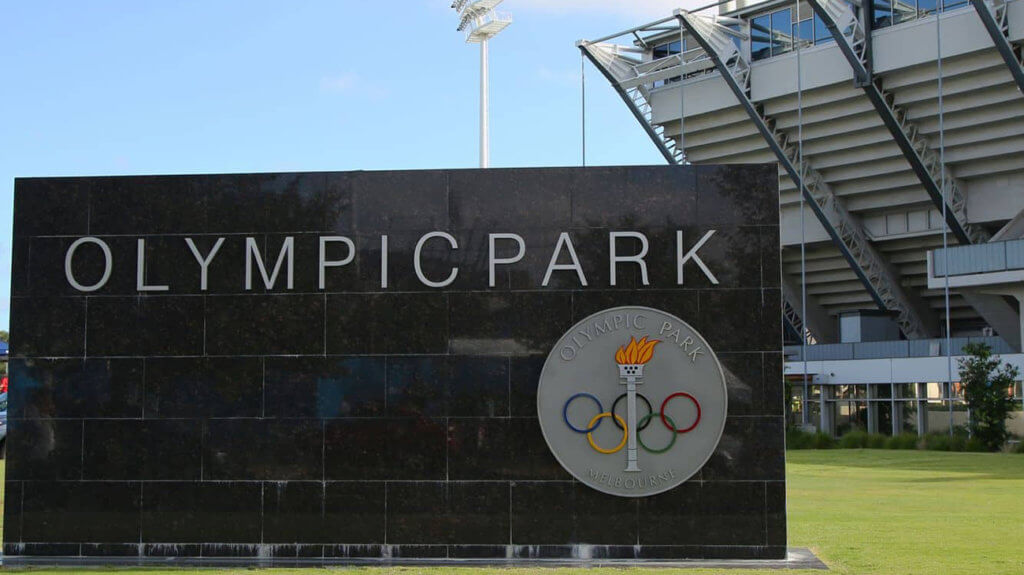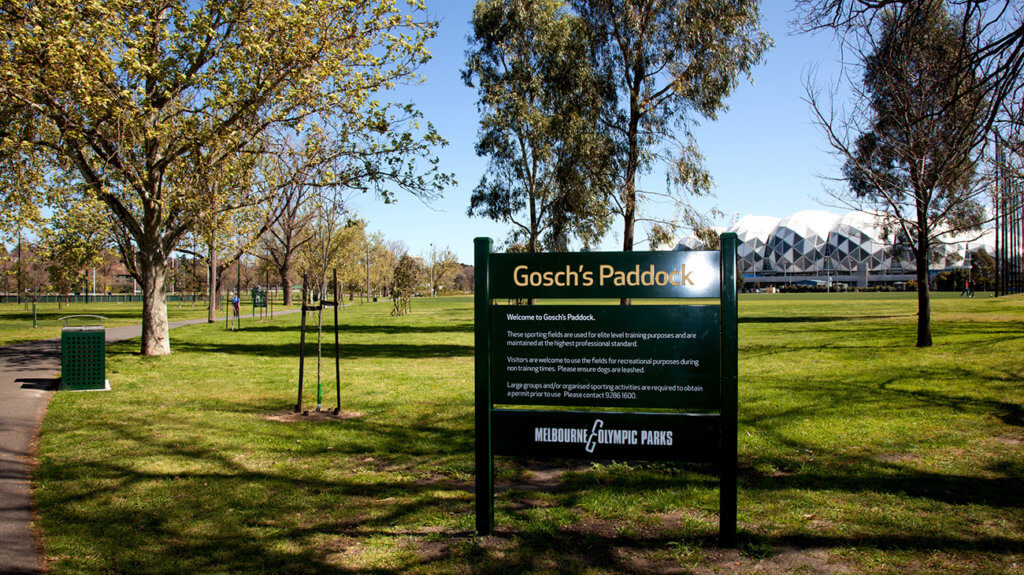Our History
Melbourne Park has a rich history of bringing people together.
Prior to European settlement, First Nations people traversed the areas alongside the Birrarung (Yarra River) to gather food, with significant cultural gathering places located nearby at Yarra Park and the Royal Botanic Gardens.
Before Federation, the area currently occupied by Melbourne Park was designated part of Government Paddock, hosting a range of functions including police barracks, zoological gardens, and public parklands.
In 1909, the Victorian Government designated this site as Crown Land, dedicated to the “recreation, convenience, and amusement of people.” Early events included cycling, racing, athletics, wrestling, and Australian Rules football.
Olympic Park was established in 1933, bringing speed-car racing to its lineup. However, with the onset of World War II and petrol rationing in 1940, motorsports became unfeasible, and the arena was demolished in 1946.
Significant redevelopment works were undertaken to prepare the site for the 1956 Summer Olympics, hosting field hockey, cycling, swimming and diving. Following the Olympics, the area became Melbourne’s home of soccer, rugby union, greyhound racing, and equestrian events.
In 1988, the Australian Open moved from Kooyong Stadium to Melbourne Park, with another major redevelopment undertaken to establish the National Tennis Centre, creating the world class venues now known as Rod Laver Arena and Margaret Court Arena.
At the dawn of the new millennium, the site continued to evolve with the addition of a multipurpose arena (now John Cain Arena) in 2000, which played a pivotal role in the 2006 Commonwealth Games.
In 2010, AAMI Park opened, and over the last decade, nearly a billion dollars has been invested by the Victorian Government to redevelop Melbourne Park, ensuring its venues remain state-of-the-art, and securing the Australian Open in Melbourne until at least 2046.
Quick Links
Rod Laver Arena History
Originally known as Centre Court at the National Tennis Centre, Rod Laver Arena was first opened in 1988. It was renamed in January 2000 in recognition of tennis legend Rod Laver’s significant achievements.
As centre court for the Australian Open, this popular venue hosts a diverse range of live sports and entertainment events, from historic Grand Slam showdowns to performances by world famous international touring artists.
Welcoming over a million visitors each year, the arena made history on 18 November 2007 when a record-breaking crowd of 16,183 fans packed the venue to see Justin Timberlake.
Timeline
- 1987: Stage One of a $94 million project is completed, featuring a 14,280-seat centre court with a 700-tonne retractable roof, match courts, practice courts, public concourses, public transport infrastructure and car parking.
- 1988: The National Tennis Centre opens to host the 1988 Australian Open, and AC/DC becomes the first live band to perform at the venue.
- 1996: Stage Two is completed ahead of the 1996 Australian Open. Changes to the venue include two new show courts, a function centre, eight additional match courts, additional car parking, and Garden Square.
- 2000: Previously known as ‘Flinders Park’, the ‘National Tennis Centre’ or ‘Centre Court’, the venue is renamed Rod Laver Arena on 16 January 2000, in recognition of Rod Laver’s remarkable tennis career.
- 2005: The 2005 World Artistic Gymnastics Championships are held at Rod Laver Arena, followed by the Commonwealth Games gymnastic competitions in 2006.
- 2019: The $338 million Stage Two of the Melbourne Park Redevelopment sees significant improvements, including a new main entrance, public concourses, accessible entrances and an upgrade to the retractable roof.
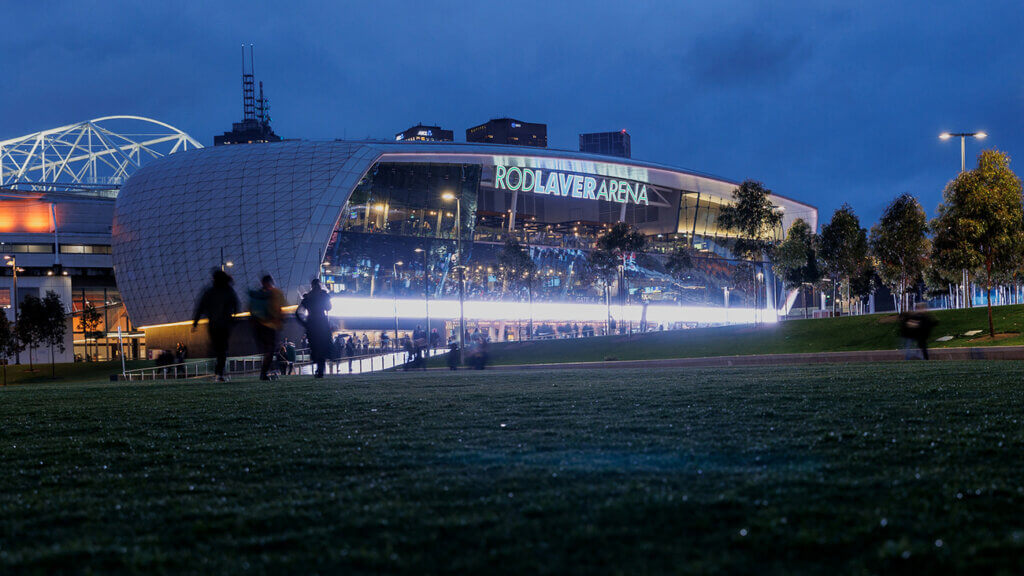
Margaret Court Arena History
The venue now known as Margaret Court Arena was first opened in 1988. Originally part of the new National Tennis Centre complex, it was purpose-built to host the Australian Open.
Known for its versatility, the arena hosts a range of sporting events, live music, and entertainment, and is celebrated for its excellent acoustics and retractable roof.
Timeline
- 1988: Stage One of a $94 million project is completed, as the 700-tonne Margaret Court Arena opens as ‘Show Court One’ in time for the 1988 Australian Open, part of the new purpose-built National Tennis Centre.
- 2003: The venue is renamed Margaret Court Arena on 12 January 2003 as a tribute to Australia’s most successful female tennis player.
- 2010: The Victorian Government announces Margaret Court Arena will undergo significant improvement works as part of the near-$1 billion Melbourne Park Redevelopment, with capacity increased from 6,000 to 7,500, and the installation of a state-of-the-art retractable roof.
- 2025: AURORA draws a record 7,062 crowd in February, setting an entertainment attendance record at MCA.
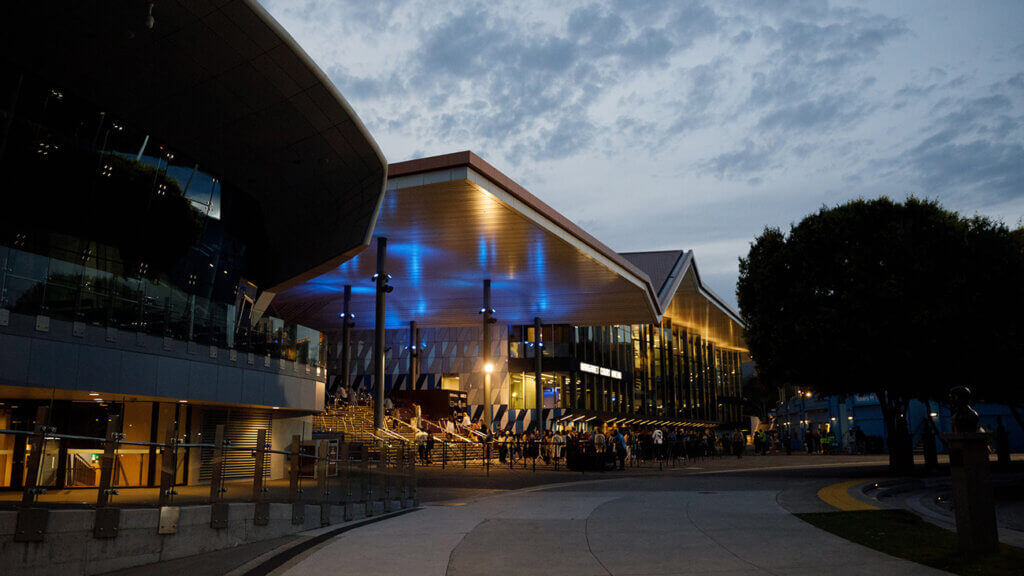
John Cain Arena History
Opened in 2000, this $65 million arena was designed as a flexible, multipurpose venue.
Its 250m cycling track, retractable seating, and adaptable floor plan enable it to host a wide range of events, bringing crowds close to the action.
Known as the ‘People’s Court’ during the Australian Open, the arena hosts basketball, netball, and electrifying live performances, providing a home arena for Melbourne United, South East Melbourne Phoenix, Melbourne Vixens, and Melbourne Mavericks.
Timeline
- 1992: An oval previously used by Scotch College, the Melbourne Cricket Club and the Old Scotch Collegians Football Club is vacated after ‘The Oval’ is established opposite Rod Laver Arena.
- 2000: The site of the former oval is redeveloped into a multi-purpose arena.
- 2004: The arena hosts its first world championship event, the UCI Track Cycling World Championships (which it hosts again in 2012).
- 2006: The venue hosts basketball, netball and track cycling at the 2006 Commonwealth Games.
- 2016: A record crowd of 11,293 music fans fills the arena for an unforgettable RNB Fridays Live event.
- 2020: Formerly known as Vodafone Arena, Hisense Arena, and Melbourne Arena, the venue was renamed John Cain Arena in honour of Victoria’s 41st Premier, whose vision helped shape the future of Melbourne Park.
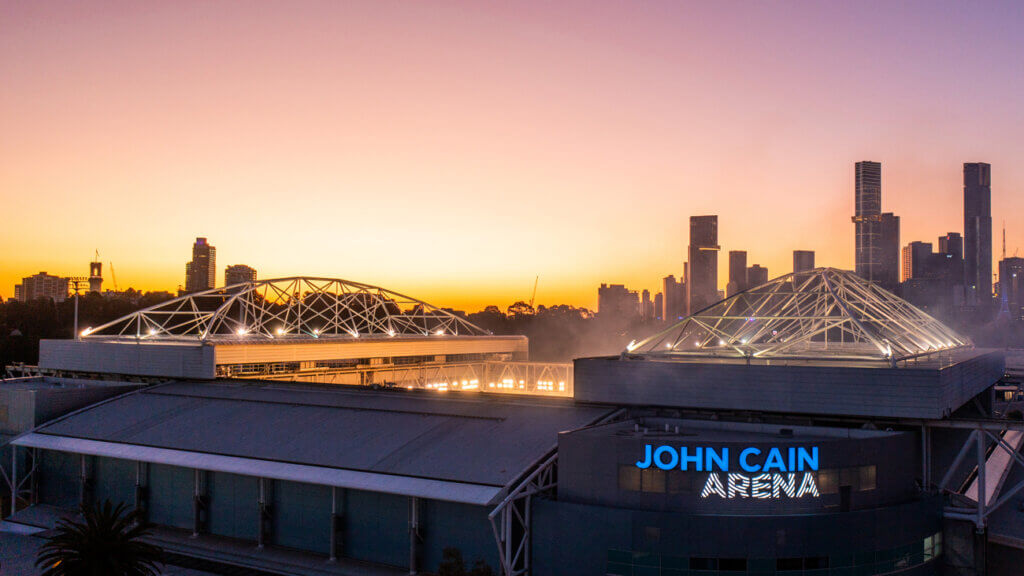
AAMI Park History
In 2006, the Victorian Government announced the $190 million development of a new rectangular stadium, which opened in 2010 on the site of Edwin Flack Field.
AAMI Park replaced the former Olympic Park Stadium as Melbourne’s home of rectangular sports, accommodating crowds of up to 30,000 fans.
The stadium is home to Melbourne Victory and Melbourne City FC (Football) and Melbourne Storm (Rugby League).
Timeline
- 2006: The Victorian Government announces plans for a new 20,000-seat venue to host rugby league, rugby union and football. Construction commences in 2007, and plans are soon amended to increase the venue’s capacity to 30,000.
- 2010: Melbourne Rectangular Stadium, known as AAMI Park, is officially opened. The venue’s first event, the 2010 Rugby League Anzac Test, is played in front of a sell-out crowd.
- 2015: Taylor Swift sells a record 98,136 tickets over three nights.
- 2023: Melbourne Rectangular Stadium hosts six games during the 2023 FIFA Women’s World Cup™.
- 2025: A record crowd for a sporting event – 29,902 fans – packed the stadium for the 2024-25 A-League Men’s Grand Final, marking the first-ever Melbourne Derby Grand Final between Melbourne City FC and Melbourne Victory.
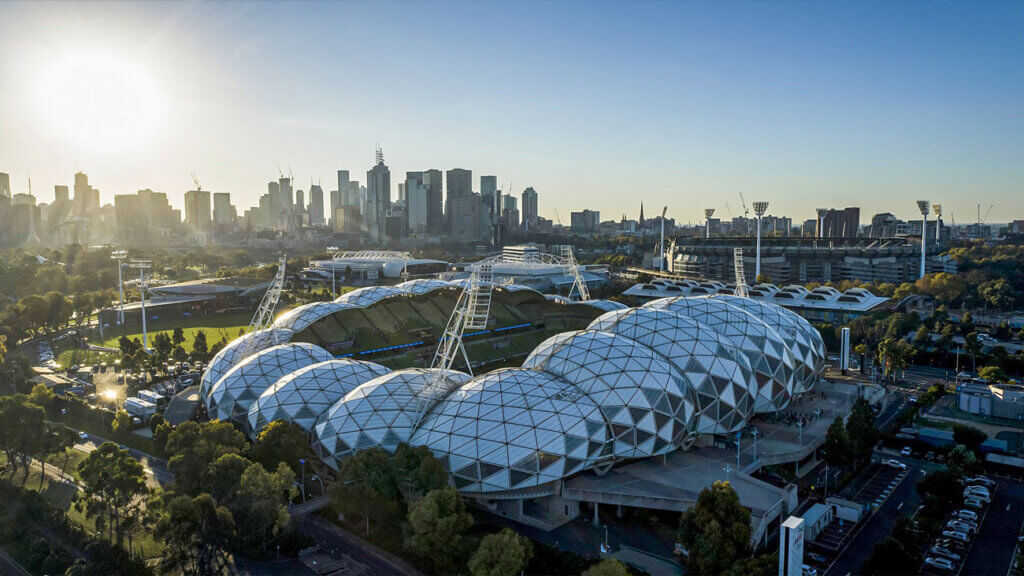
CENTREPIECE History
The latest chapter in Melbourne Park’s history is unfolding at Centrepiece, Melbourne’s newest conference and events venue.
Built on the site of the former function centre, Centrepiece was delivered during Stage Three of the Victorian Government’s near-$1 billion Melbourne Park Redevelopment.
The venue’s flexible space allows it to service a range of events and capacities, and has set a new standard for conferences, conventions, and more, standing out in Melbourne’s busy function and corporate events landscape.
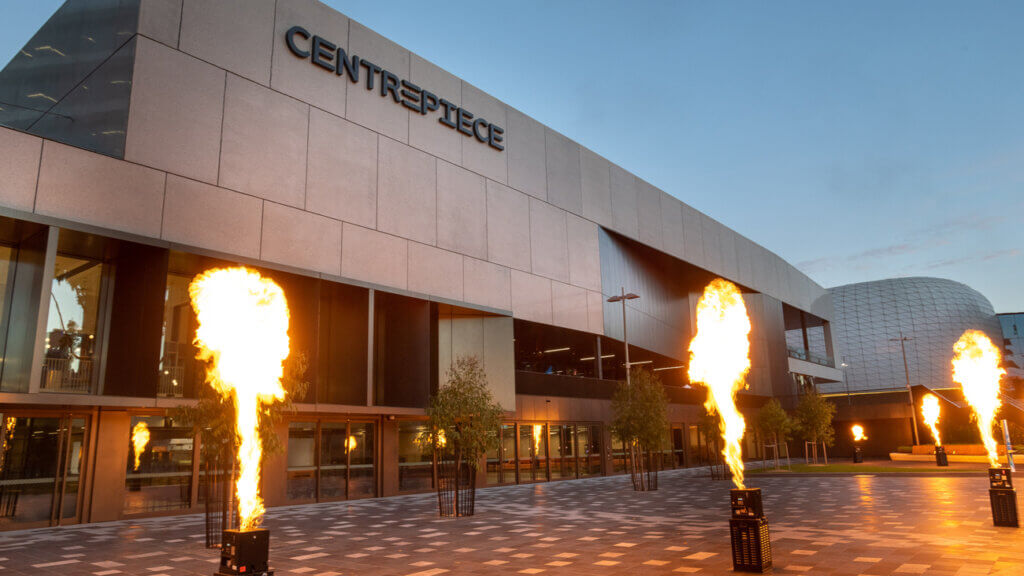
Kia Arena History
The 5,000-capacity Kia Arena is one of Melbourne’s newest outdoor sports and entertainment venues, centrally located within Melbourne Park.
Situated opposite Rod Laver Arena and adjacent to Centrepiece, Kia Arena comes alive as a premier show court during the Australian Open.
Beyond tennis, the arena offers endless possibilities for unique events, making it a versatile addition to Melbourne’s vibrant event landscape.
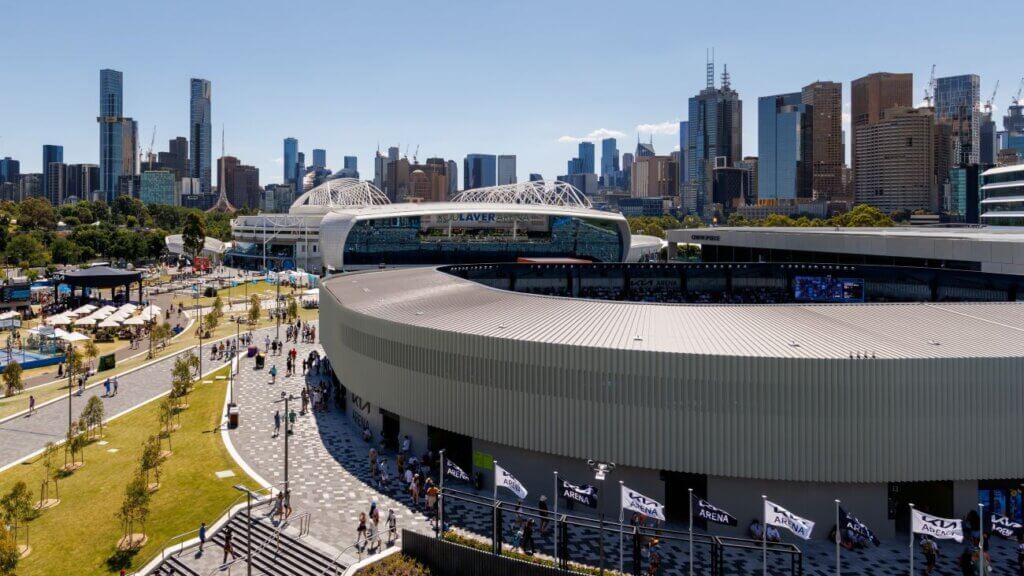
Other Facilities
In addition to its six venues, Melbourne Park is home to several other facilities.
Olympic Park Oval is located on the former site of the Olympic Park Stadium, which was decommissioned after the development of AAMI Park. It serves as a training facility for the Collingwood Football Club, playing an important role in the club’s success.
Historically, Melbourne Park has deep roots in local sport. In the late 1800s, part of the site was leased to William Henry Gosch as a paddock for his horses. Today, Goschs Paddock continues to be used by elite sporting teams for training while also offering a recreation space for locals.
The AIA Centre, originally built as a 5,500-seat swimming pool for the 1956 Summer Olympics, has been redeveloped for various purposes over the years, and now houses training and administrative facilities for Collingwood Football Club, further enhancing Melbourne Park’s role as a hub for sports and community engagement.
